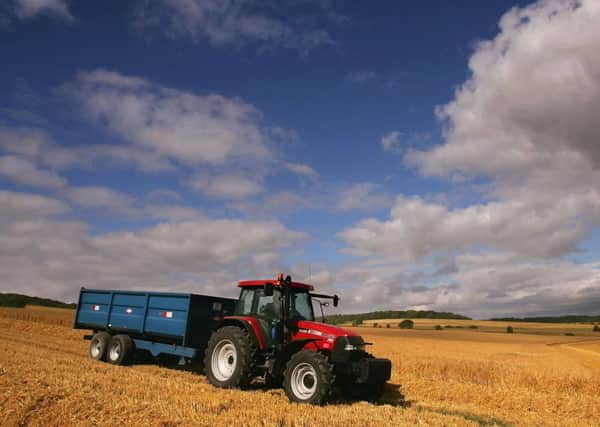Figures highlight trend to decline in tenanted sector


The annual survey of let land carried out by the Central Association of Agricultural Valuers (CAAV) showed the amount of farmland let in Scotland in 2015 declined by over 12,000 acres – the largest reduction recorded since the survey began in 2012.
Revealing the results at yesterday’s annual meeting of the Scottish Agricultural Arbiters and Valuers Association, CAAV secretary Jeremy Moody said that of the units falling vacant during the year, only half were re-let under formal arrangements – the rest either being taken back in hand or offered out on contract farming arrangements.
Advertisement
Hide AdAdvertisement
Hide Ad“This has fallen from an historic re-let figure of 75 per cent and if sustained the decline in the Scottish tenanted sector will accelerate,” he said.
On a slightly brighter note, he pointed out that half of the lets had gone to new entrants – double the usual proportion. However, he also revealed that there had been no fresh land coming onto the market, with the new rentals all coming from land which had been previously let.
“If the size of the tenanted sector is to be maintained or grown, it is important policy makers find a way to encourage the positive letting of land” said Moody.
Looking towards the land reform bill which has its final reading today, he said that while some aspects would be tied down, details on important parts of the legislation were yet to be settled – particularly on the agricultural holdings side.
Moody said this important element now made up more than 50 per cent of the bill – but important details such as those surrounding the setting of rental values were to be left to secondary legislation.
“So what we have in the bill is nowhere near the last word in the game – and it could be 2018 before some elements are enacted, while others will be ongoing,” he said.
He also warned that working in the area of holdings legislation was set to become incredibly complicated – with seven different ways of letting land on the statute books under three different agricultural holdings acts. While the productive capacity of the land had been put forward as the main plank for setting rentals values, this was unlikely to be simple.
“Using arithmetic alone risks setting rental values which could be absurd and unfair so a ‘sense check’ also needs to be built into the calculations,” he said.
Advertisement
Hide AdAdvertisement
Hide AdAny assessment of “productive capacity” was sensitive to changes in commodity and input prices and fixed cost structures – and while the approach had been adopted south of the Border, it had been only one of a number of issues to be considered rather than the main “load-bearing” component of the rental calculation.